丝路概说
- 交通路线
- 长安与丝绸之路
- 从长安到罗马——汉唐丝路全程探行纪实上
- 从长安到罗马——汉唐丝路全程探行纪实下
- 海上丝路史话
- 丝绸之路史研究
- 早期丝绸之路探微
- 早期丝绸之路文献研究
- 中西丝路文化史
- 沧桑大美丝绸之路
- 传播友谊的丝绸之路
- 路途漫漫丝貂情——明清东北亚丝绸之路研究
- 世界的中国——丝绸之路
- 丝绸之路
- 丝绸之路寻找失落的世界遗产
- 丝绸之路2000年
- 丝绸之路——从西安至帕米尔
- 丝绸之路经济带发展报告2014
- 丝绸之路考古十五讲
- 丝绸之路——神秘古国
- 丝绸之路——沿线城镇的兴衰
- 丝绸之路在中国
- 丝路景观
- 丝路起点长安
- 丝路文化新聚焦
- 丝路之光——创新思维与科技创新实践
- 中国丝绸之路交通史
- 中华文明史话-敦煌史话
- 中国·北海合浦海上丝绸之路始发港理论研讨会论文集
- 丝绸之路
- 丝绸之路新史
- 西域考古文存
- 丝绸之路的起源
▲西方技术与文化的东传
作者:方明
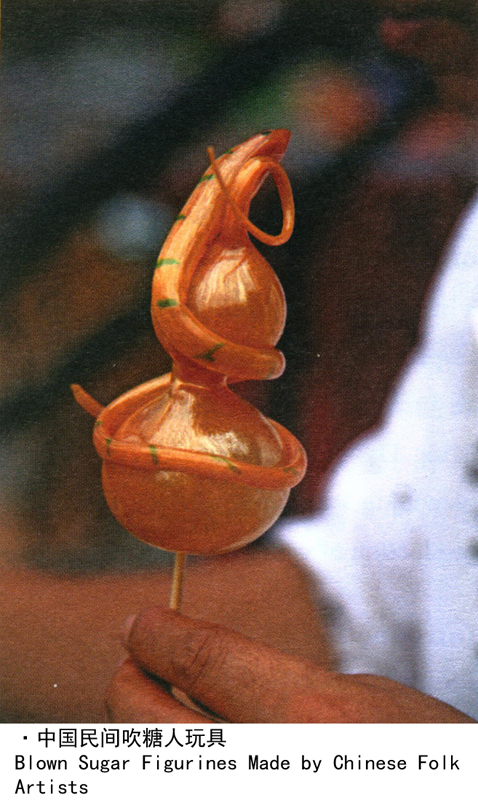

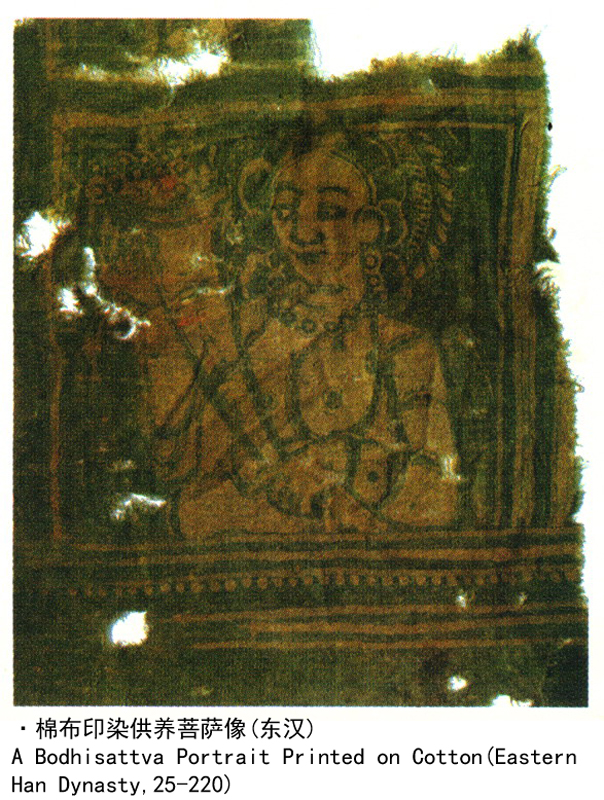
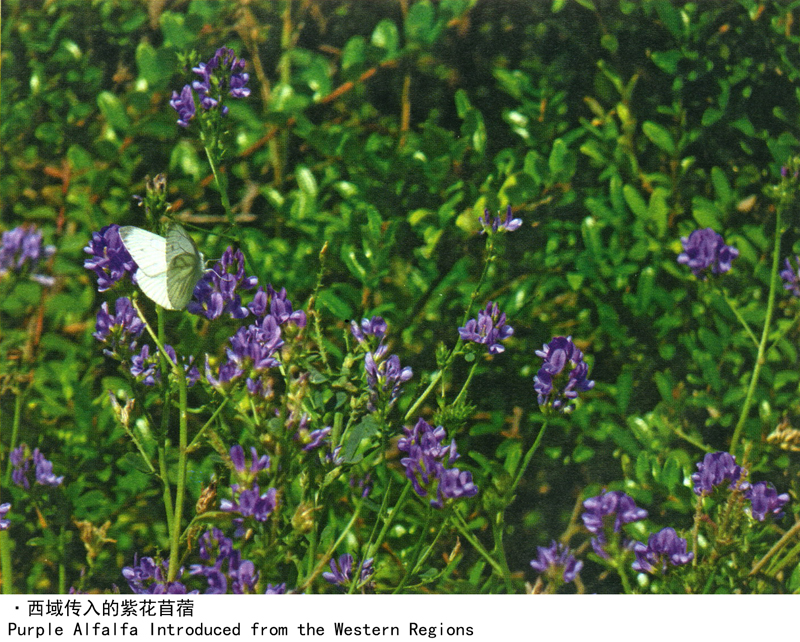
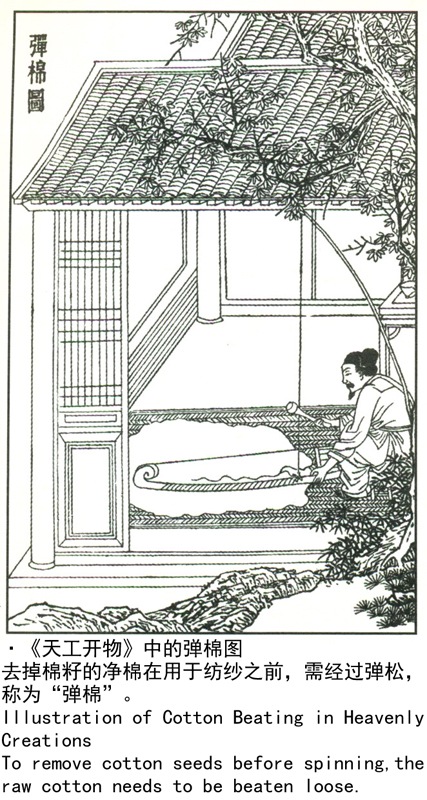
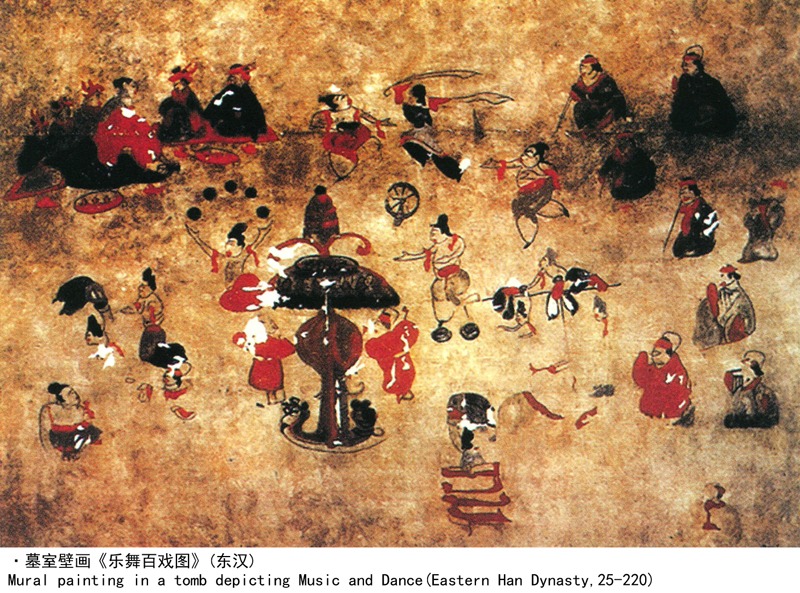
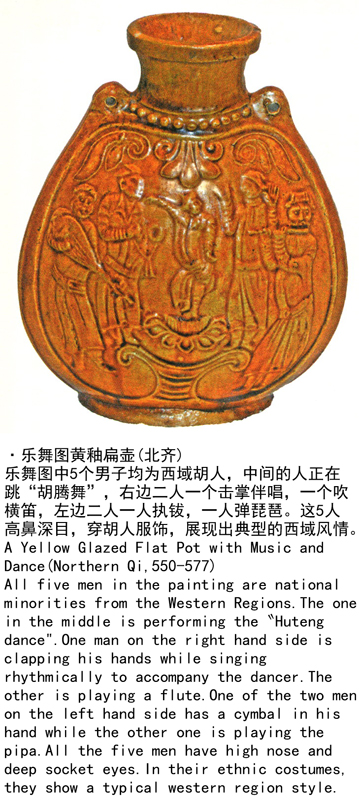
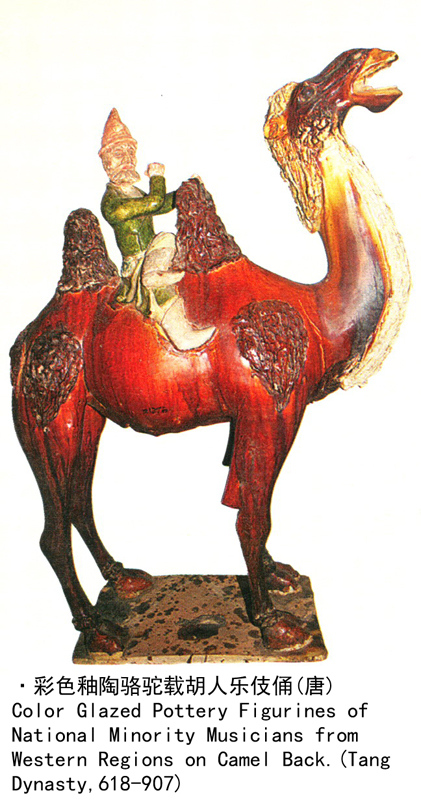
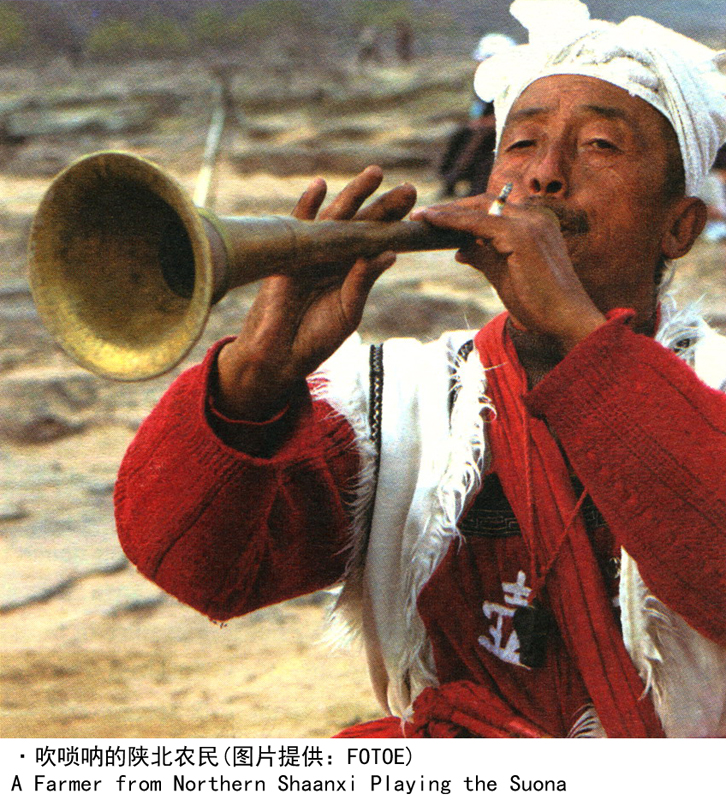
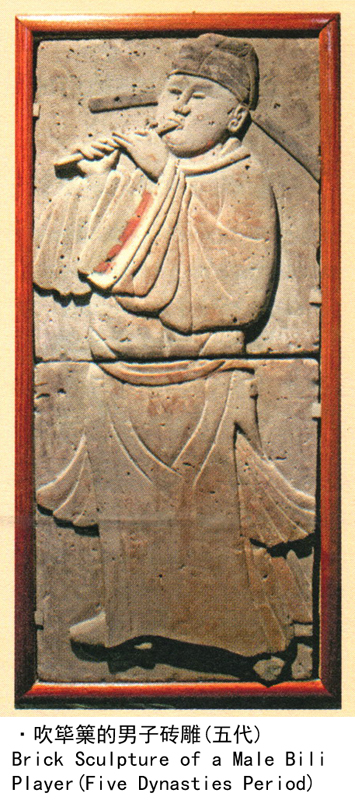
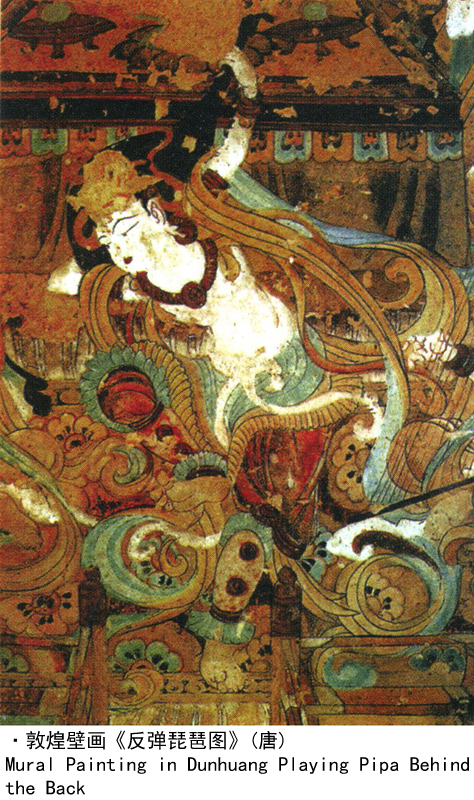
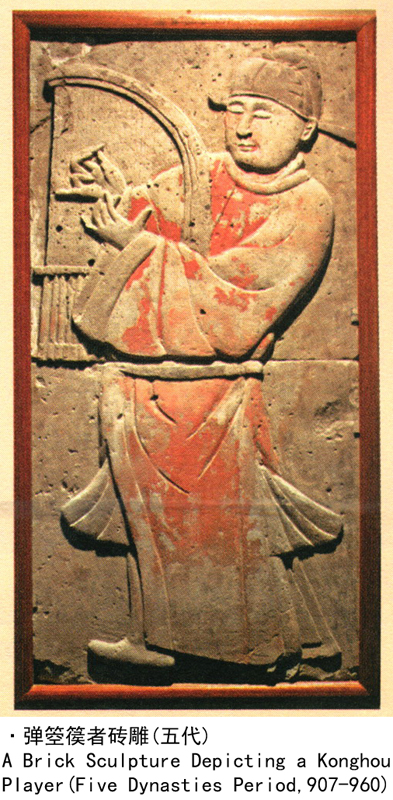
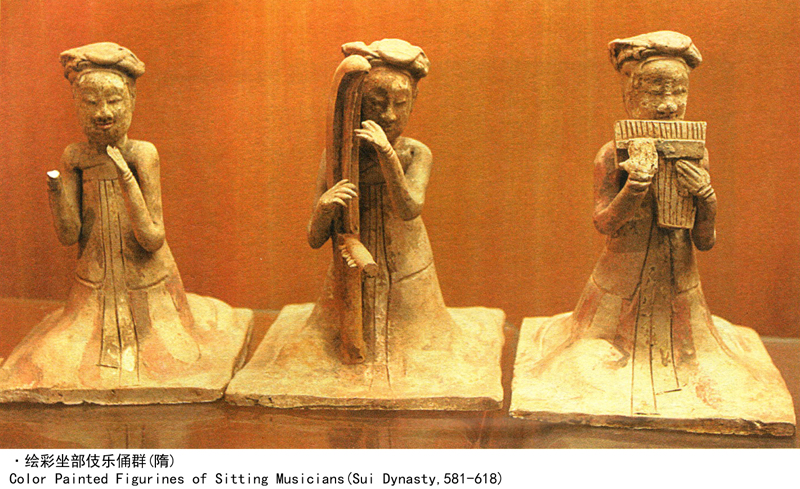
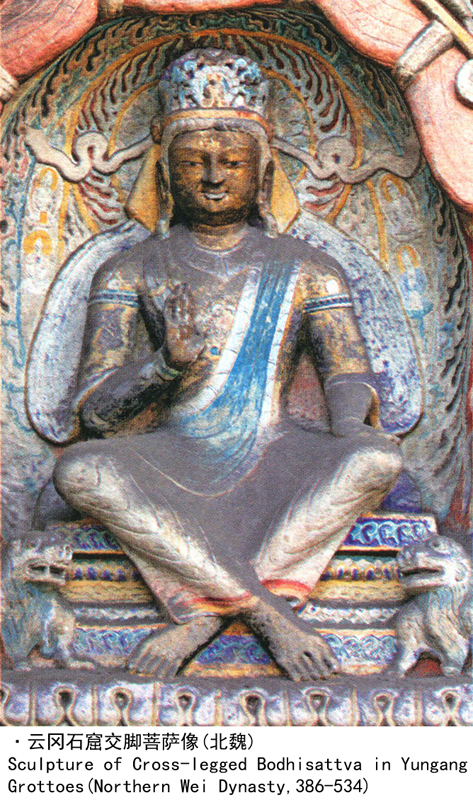
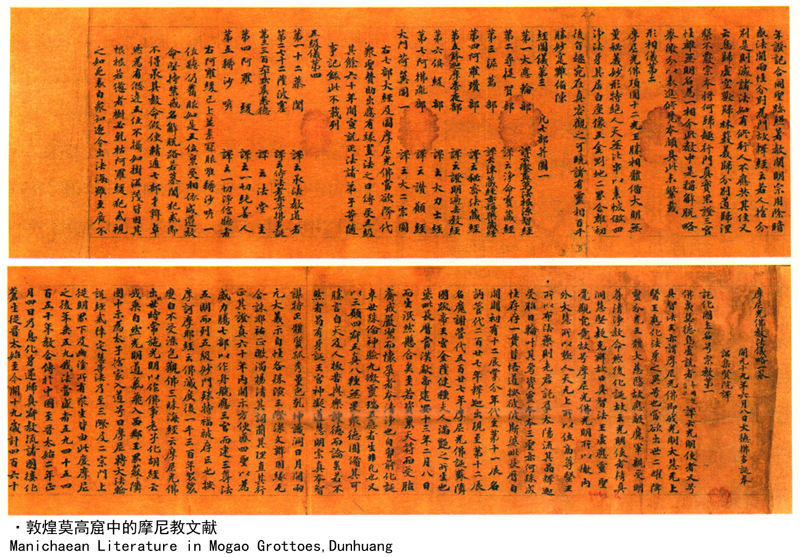
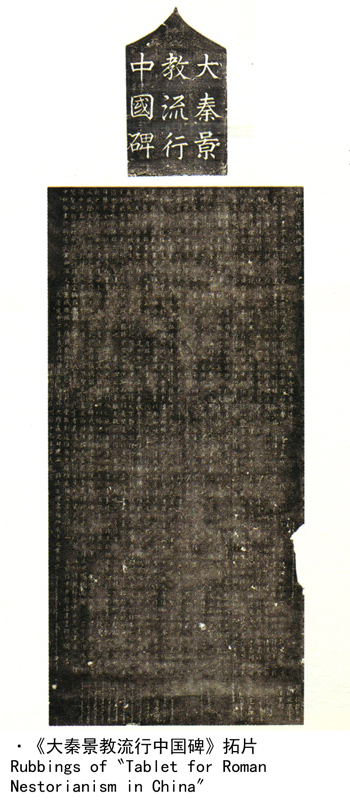
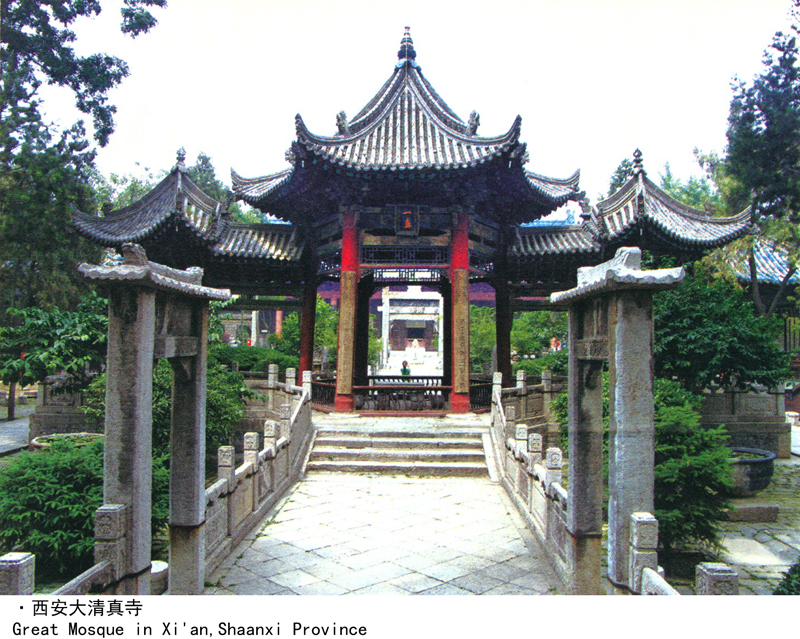
张骞出使西域,带回了西域的优良马种——汗血宝马,还有一些今天中国人生活中最常见的农作物。同时我们的丝织品和铸铁的方法也传到欧洲。而经由丝绸之路,许多西方的工艺、宗教、艺术传入中国,对中国文化的发展影响非常大。
熬糖术的传入
印度次大陆是世界甘蔗的发源地之一,也是最早发明蔗糖加工技术的国家。据文献记载,在中国的西汉时期,印度一带就已经出现了熬制蔗糖的技术。而中国的甘蔗种植虽始于春秋战国时期,但当时只会将甘蔗榨汁或直接食用,并未掌握制糖技术。西晋史学家司马彪在《续汉书》中记载:“天竺国出石蜜。”这种“石蜜”就是蔗糖,曾是西域进贡中原的珍品,只有皇室贵族才能享用。敦煌残卷中也有一段关于古印度制糖术的记载,提到印度出产甘蔗,可造最上等的“煞割令”,即蔗糖。唐朝时,唐太宗派使臣王玄策等人经丝绸之路前往古印度学习熬糖术,并下令在扬州地区大面积种植甘蔗,用于试制蔗糖,结果“色味愈西域远甚”(《新唐书·西域传》)。唐代以后,中国的制糖技术不断提高,品质不断改进。中国人还在印度红糖制造技术的基础上不断改进,于明代发明了红糖脱色技术,制造出了白糖。
琉璃的传入
琉璃亦作“流离”、“瑠璃”,在中国古籍中记载的琉璃往往是西方的特产。其在中原地区的出现是与丝绸之路上商旅的往来密不可分。唐初的学者颜师古引史书《魏略》说:“大秦国出赤、白、黑、黄、绿、红、紫等十种流离。”其中的“大秦”指东罗马帝国,这里所说的“流离”应当就是一种玻璃。据考证,最早的玻璃出现在公元前5000年,发明者是生活在两河流域的苏美尔人。到公元前2000年的时候,地中海东岸的腓尼基人将玻璃制作技术传到了埃及,而埃及人则将玻璃的制作工艺发挥到了淋漓尽致的地步。早在公元前1000年,西方的玻璃珠就已经传入了中国的新疆地区。随着丝绸之路的正式开通,到了公元5世纪,中亚地区的玻璃制造技术随着大月氏商人传入了中国。
西域物产的传入
自从张骞出使西域之后,西域诸国的物产大量传入内地。汉武帝时期引进的汗血马是最驰名的品种之一。这种优良马种体格魁伟,四足纤细,胸颈和臀部都十分发达。此外,还有大象、狮子、安息雀(即鸵鸟)等也陆续传入内地。在植物方面,葡萄、苜蓿、胡麻、胡豆、胡蒜、胡瓜(即黄瓜)、胡桃、胡葱、巴旦杏等数十种作物相继东传,印度的胡椒、安息的石榴等也先后传入中国。特别是棉花的传入,对中国经济发展和百姓生活都产生了极其深远的影响。
棉花原产于印度和非洲,中国最早植棉的地区是新疆地区。最迟在东汉时期,新疆地区就已经开始种植棉花和用棉线织布了。棉花传入之前,中国人传统衣着是穿裘皮、丝绸或麻布。唐代时,唐军平定高昌,取棉种移植内地,棉花才逐渐传入中原其他地区。目前中原地区所见到的最早的棉纺织品遗物,是在一座南宋古墓中发现的一条棉线毯。到了元代,棉布已成为中原百姓主要的纺织衣料了。
西域乐舞的传入
丝绸之路的开通还使西域与中原的音乐文化得以交流,西域民族的乐器和乐舞开始传入中原,受到汉族人民的喜爱。
魏晋时期,随着社会的分裂动荡和各民族的迁徙融合,西域乐器和乐舞大量经由丝绸之路传入内地。公元386—432年,后凉吕光大败龟兹军队,俘获的战利品中便有着一支完整的龟兹乐队。据《太平御览》引《乐志》载,这支乐队共有20个乐工,使用的乐器有竖箜篌、琵琶、五弦、笙、笛、箫、筚篥、毛员鼓、都昙鼓、答腊鼓、腰鼓、羯鼓、鸡娄鼓、铜钹、贝等15种。
公元568年,北周武帝宇文邕娶阿史那公主为皇后,突厥可汗将一支由龟兹、疏勒、康国、安国等地组成的300人的庞大西域乐队作为女儿的陪嫁,送至长安,同时派遣著名龟兹乐工苏祗婆、白智通等作为随从人员前去中原地区,从而使西域音乐对中原音乐产生了一定影响。
隋唐时期,国家统一,经济繁荣,宫廷歌舞乐得以发展。在隋朝宫廷中有“九部乐”的演奏,其中就有龟兹乐、疏勒乐、康国乐、安国乐和西凉乐等西域音乐。唐朝宫廷乐舞继承了隋朝的“九部乐”规制,在公元642年又将《高昌乐》列入,从而成为众所周知的“十部乐”制,至此,国家最高规格的宫廷乐舞中,西域乐舞竟占了半数之多。在这十部伎乐中,《龟兹乐》无疑最具影响力,深受公卿贵族与普通民众的喜爱。除乐曲外,琵琶、箜篌、鼓、角等西域传统乐器也大放异彩,成为唐代以及后世音乐演奏中的重要乐器。
隋唐时期,西域舞蹈也在内地流行开来。西域舞蹈风格多样,最著名的当属胡腾舞、胡旋舞、柘枝舞三种。胡腾舞采用男子独舞的形式,动作以闪转跳跃为主,充满阳刚之气。而胡旋舞以动作急速旋转而得名,唐代诗人白居易曾以“左旋右转不知疲,千匝万周无已时”的诗句来形容。胡旋舞的表演者多为女性,据说舞技精湛者可以在滚动的圆球上旋转如飞。由于唐玄宗格外喜好胡旋舞,宫女们“臣妾人人学圆转”,甚至连后来挑起“安史之乱”的胡人节度使安禄山也精于此舞。柘枝舞舞姿矫健,节奏明快,变化多端,最初是单人舞,后发展成双人舞和多人舞。
元朝时期,由于皇室成员本身便是少数民族出身,宫廷乐府沿用西域少数民族的乐器更是合情合理。其乐曲大致分为大曲与小曲二类。大曲中《达罕》(亦称《白翎雀》)的作曲者便是大名鼎鼎的西域乐工硕德闾。
西方宗教的传入
在汉代到隋唐时期,印度的佛教、波斯的祆教和摩尼教、东罗马的景教、阿拉伯的伊斯兰教陆续传入中国,对中国的政治、思想、文化艺术以及科学的发展都产生了很大影响。
佛教
佛教诞生于公元前4世纪的古印度,在公元前3世纪已经开始向国外传播,成为世界性的宗教。大约在公元前2世纪,佛教沿着贯通亚洲大陆的丝绸之路传到中国现在的新疆地区,然后经过玉门关、河西走廊传到内地,逐渐传播到全国。最早自西向东行进在古丝绸之路上的佛教僧人中,比较著名的有安息国王子安世高、龟兹僧人佛图澄、鸠摩罗什等人。随着佛教的东传,石窟、雕像、壁画等艺术也传入中国,与传统艺术相结合,从而创造出云冈石窟、龙门石窟、敦煌石窟、麦积山石窟和新疆境内众多的佛教雕刻、壁画艺术群,留下了丰富珍贵的艺术宝库。
祆教
祆教又称“琐罗亚斯德教”,是流行于古代波斯(今伊朗)及中亚等地的宗教,中国史称“祆教”、“拜火教”。公元3世纪中叶,祆教即经丝绸之路逐渐传入中国,在唐朝达到鼎盛。
摩尼教
摩尼教流行于波斯,唐代武则天延载元年(694)由波斯人传入中国。此教提倡节俭、互助,不吃荤、不饮酒,死后裸葬,易于为农民所接受。中国各地都建有摩尼教寺院,称为“大云光明寺”。宋朝时方腊领导的农民起义就曾以摩尼教为号召。
景教
景教即唐朝时期传入中国的基督教聂斯脱里派。唐贞观九年(635),景教僧侣阿罗本将此教传入中国。唐太宗李世民下诏命在长安城中建寺一所,许其传教。在德宗建中年间(780—783),更立《大秦景教流行中国碑》,记述景教在中国的流行情况。
伊斯兰教
伊斯兰教是阿拉伯人穆罕穆德于622年创立,最早传入中国始于唐代,当时大批西亚地区的穆斯林来到中国内地经商,将伊斯兰教带入了中国。公元10世纪,以喀什、阿图什为中心的哈喇汗王朝国王萨图克·布格拉汗改信伊斯兰教,11世纪初,哈喇汗王朝大军攻灭于阗,使于阗地区普遍皈依伊斯兰教。13世纪时,在蒙古军队大举西征的背景下,大批西方人移居中国,信仰伊斯兰教的波斯人、阿拉伯人以及突厥语族人长期聚居在一起,融合发展并逐渐中国化,形成了中国特有的民族回族。
>Eestward Dissemination of Western Technology and Culture
On his return from the Western Regions,Envoy Zhang Qian brought back to the Central Plains a fine steed,the Ferghana,as well as some of the most commonly seen crops today.At the same time Chinese silk products and cast iron technology were also introduced to Europe.Through the Silk Road,many western crafts,religion and arts entered China,producing an enormous impact on the development of Chinese culture.
Introduction of Sugar Processing Technology into Central Plains
As one of the birthplaces of sugar canes,India on the Indian subcontinent was the first country in the world that invented the sucrose brewing technology.According to historical records,as early as during China's Western Han Dynasty,sucrose brewing technology appeared in India.Although China began to grow sugar canes as early as during the Spring and Autumn and the Warring States Period,the Chinese people only ate the canes directly or extracted juice from it.The Chinese did not master the sugar producing technology.Western Jin historian Sima Biao wrote in his book Han Book Continued:〝Solid honey is produced in Tianzhu Kingdom."Here solid honey refers to〝sucrose",which used to be a precious tribute from the Western Regions to the Central Plains dynasties and only the imperial family and aristocrats were entitled to enjoy such luxury.In one of the document fragments found in Dunhuang,there is the following description about the ancient Indian sugar processing technology:〝India produces sugar canes and can make the finest sucrose."Emperor Taizong of the Tang Dynasty sent envoy Wang Xuance to ancient India to study sugar refining technology.The Emperor also ordered sugar canes be cultivated in large areas of the Yangzhou region for trial production of sucrose.However〝both the color and the texture of sucrose produced in Yangzhou were far away from those made in the Western Regions"(The Tang Book Updates-Story of Western Regions).China's sugar technology improved since the Tang Dynasty and the quality of sucrose also improved significantly.Through continued renovation and improvement on the basis of brown sugar manufacturing technology,Ming Dynasty craftsmen invented the bleaching technique which enabled the production of white cane sugar.
Introduction of Glass into Central Plains
Glass had several names in the Chinese language.Glass recorded in the Chinese classics was often a specialty of the West.Its emergence in the Central Plains was closely related to trade and travels along the Silk Road.Early Tang scholars Yan Shigu quoted from a historical book titled Wei Strategy the following statement:〝Daqin Empire produces glass of ten colors including red,white,black,yellow,green,orange and purple。"Here〝Daqin"refers to the Eastern Roman Empire.According to research glass was invented by the Sumerians living in the Mesopotamia region about 5000 B.C.By 2000 B.C.Phoenicians living in the east bank of the Mediterranean passed the glass-making skills to Egyptians who improved the technology to its peak.As early as 1000 B.C.glass beads produced in the Western Regions entered China's Xinjiang area.With the official opening of the Silk Road and by the 5th century,glass manufacturing technology was introduced to China by Dayuezhi traders from the Central Asia.
Introduction of Resources and Products from Western Regions
Since Zhang Qian's missions to the Western Regions,resources and products from countries in the Western Regions entered the inland of China in large quantities.The Ferghana horse introduced during the reign of Emperor Wu of the Han Dynasty was one of the most famous breeds.This excellent stallion is heavyset,with slender legs and well-developed chest,neck and buttocks.In addition other animal species such as elephants,lions,and ostrich were also introduced to the inland in time.In terms of plants,more than several dozens of varieties were introduced to the eastern inland areas,including grapes,alfalfa,flax,beans,garlic,cucumber,walnuts,onion and almond.Indian pepper,Anxi's pomegranates also entered China.In particular the introduction of cotton to the inland areas produced a far-reaching impact on China's economic development and people's livelihood.
Cotton was originally grown in India and Africa.In China the earliest cotton growing area was found in Xinjiang region.By Eastern Han Dynasty at the latest,Xinjiang was already engaged in cotton growing,spinning yarns and weaving cotton fabrics.Before cotton was introduced to China,the traditional Chinese clothing materials were fur,silk and linen.In Tang Dynasty,after the Tang troops put down the Gaochang unrest,they brought cotton seeds to the inland to grow.This was how cotton was gradually introduced in other parts of the Central Plains.Now the earliest existing cotton relic from the Central Plains was a cotton blanket found in a Southern Song Dynasty tomb.By Yuan Dynasty,cotton became the major clothing materials for people of the Central Plains.
Introduction of Music and Dance from Western Regions
The opening of the Silk Road also facilitated the exchange of music culture between the Western Regions and the Central Plains.As a result western ethnic musical instruments,as well as western music and dance entered the Central Plains areas and were loved by the Han people.
During the Wei and the Jin dynasties,social unrest triggered the migration and reintegration of many ethnic peoples.As a result a large number of music and dance from the Western Regions entered the inland areas by way of the Silk Road.Between the years 386-432,Lu Guang of Later Liang defeated Qiuci.Among the trophies there was a complete Qiuci band.Quoted from the Music Chapter of Works for Emperor(Tai Ping Yu Lan),the band had twenty musicians and fifteen types of musical instruments including vertical harp,pipa(four-stringed Chinese lute),five strings,Sheng(Chinese wind pipe),flute,panpipe,Tartar pipe,Maoyuan drum,Dutan drum,Sumatra drum,waist drum,Jie drum,chicken basket drum,cymbals,conch,etc.
In 568 when Yu Wenyong,Emperor Wu of the Northern Zhou Dynasty married Princess Ashina,the Turkish Khan sent a Western Region orchestra composed of more than three hundred musicians from Qiuci,Shule,Kangguo and Anguo as her daughter's dowry.Together with the orchestra,the Khan also sent Su Zhipo and Bai Zhitong,two famous Qiuci musicians as her entourage to Chang'an.This eventually produced certain impact on music of the Central Plains.
During the Sui and the Tang dynasties,national unity and economic prosperity offered an enabling environment for court music and dance to prosper.Sui Dynasty established the〝nine music"system for banquets and ceremonies,which included music from the Western Regions such as those from Qiuci,Shule,Kangguo,Anguo and Western Liang.On the basis of the Sui Dynasty system,the Tang court added Gaochang music to the list in 642,bringing the country's highest profile music and dance program into the well known〝ten music"system with those from the Western Regions comprising half of it.Among the ten music works,〝Qiuci music"was undoubtedly the most influential one,loved by both lords and nobles as well as the common people.In addition to music works,traditional musical instruments from the Western Regions such as pipa,harp,drums,horns and others also radiated special splendor and became important instruments in music performances since the Tang Dynasty.
During the Sui and Tang dynasties,western region dance also gained popularity in inland areas.Western region dance had many styles,the most famous being the Huteng dance,Huxuan dance and Zhezhi dance.Huteng dance is a male solo dance characterized by flashing turns and jumps,full of masculinity.Huxuan dance is well-known for its rapid spins.As described by the Tang Dynasty poet that the dancer can〝spin left and right tirelessly and thousands of rounds without stopping".Most Huxuan dancers are female.It is said that a superb dancer can spin on a rolling ball.Because Emperor Yuanzong of the Tang Dynasty had special preference for Huxuan dance,ladies in the court all learned to spin on their feet.Even the rebel leader An Lushan who was a national minority from north and west China serving as the military and administrative official and who initiated the〝Anshi Rebellion"was an expert on Huxuan dance.Zhezhi dance is a vigorous.fast-paced and dynamic dance.It started off as a solo dance,but later evolved into a pas de deux and group dance.
During the Yuan Dynasty,as members of the imperial family were off springs of ethnic minorities,it was very natural for court musicians to perform musical instruments of Western Regions.Yuan music was divided into two broad categories of major pieces and minor pieces.Among the minors,Dahan(also known as white tail bird)was composed by the famous western region musician Shuo Delü.
Introduction of Western Religions to Central Plains
During the Han the Sui and the Tang dynasties,Buddhism from India,Zoroastrianism and Manichaeism from Persia,Nestorianism from East Rome,Islamism from Arabia were gradually introduced to China,producing a significant impact on the development of China's politics,ideology,culture,art and science.
Buddhism
Born in ancient India in the 4th century B.C.,the Buddhism began to spread abroad and became a world-wide religion around the 3rd century B.C.About the 2nd century B.C.,Buddhism entered China's Xinjiang region along the ancient Silk Road that ran through the Asian continent.The religion then passed the Yumenguan Pass and the Hexi Corridor and gradually penetrated into the inland areas and spread over the whole country eventually.Some of the earliest Buddhist monks who traveled along the ancient Silk Road included An Shigao—Prince of the Anxi Kingdom,Buddhacinga(Futucheng)and Kumarajiva-monks from the Qiuci Kingdom.With the eastward dissemination of Buddhism,various forms of arts such as grottoes,sculptures,mural paintings and others also entered China.After their integration with traditional Chinese arts,a large number of Buddhist sculptures and mural paintings such as those found in Grottoes at Yungang,Longmen and Dunhuang,Maijishan and Xinjiang were created,leaving behind a rich and precious pool of artistic treasures.
Zoroastrianism
Zoroastrianism was a popular religion in ancient Persia(present-day Iran)and Central Asia.In Chinese history this religion was known in different names such as Fire-worship.During mid 3rd century,Zoroastrianism entered China via the Silk Road and reached its peak in the Tang Dynasty.
Manichaeism
Manichaeism was a popular religion in Persia and entered the Tang Dynasty from Persia in the first year of the Yanzai Period(694)during the reign of Empress Wu Zetian.This religion advocated for frugality,mutual aid,vegetarian food,alcohol free,simple burial practice,thus easy for farmers to accept.Manichaeism monasteries built all over the country were known as〝Great Cloud Bright Temple".The Song Dynasty peasant uprising led by Fang La used Manichaeism slogans as their advocacy messages.
Nestorianism
As a sub-branch of Christianity,Nestorianism was introduced to China during the Tang Dynasty.On the 9th year of the Zhenguan Period(635),a Nestorian pope named Alopen brought Nestorian teachings to China.Emperor Taizong Li Shimin ordered a monastery be built in Chang'an city where Alopen was permitted to preach.During the Jianzhong Period of Emperor Dezong(780-783),a〝Tablet for Roman Nestorianism in China"was built to record Nestorian's dissemination and expansion in China.
Islamism
Founded by an Arab named Muhammad in 622, Islamism was first introduced to China during the Tang Dynasty when a large number of Muslim merchants from West Asia came to China to conduct trade.In the 10th century,Satuk Bugera Khan,King of the Karahan Empire centered around Kashi and Atushi,converted to Islamism.In early 11th century,Karahan army conquered the Khotan Kingdom and converted the local religion to Islamism.By 13th century,along with large-scale expedition of the Mongol armed forces,a large number of westerners moved to China.Persians and Arabs who believed in Islamism and Turkish-speaking ethnic groups lived together and gradually formed a unique Chinese Muslim community.
西域传入中原的乐器
Musical Instruments Imported from Western Regions
从西域传入中原的乐器主要有唢呐、筚篥、琵琶、箜篌等几种。
Musical instruments introduced from Western Regions to Central Plains mainly include suona(a woodwind instrument),Tartar harp,pipa(four-stringed Chinese lute),harp,etc.
唢呐是一种吹管乐器,最初由波斯传入中国,两晋时期的新疆克孜尔石窟壁画中就已经出现了唢呐演奏的绘画。最晚在16世纪,唢呐就在中国的民间流传了。这种乐器发音高亢、嘹亮,极具表现力,至今在各地广泛流传。
Suona is a wind instrument introduced from Persia.A Western Jin Dynasty mural found in a Kizil Grotto of Xinjiang depicts the scene of a suona performance.By 16th century at the latest,suona became a very popular musical instrument in folk society.This high-pitched,loud and clear,very expressive musical instrument is still very popular in many parts of China today.
筚篥是古代一种双簧类的乐器,音色悲凉、深沉。西汉时期,筚篥流行于龟兹地区,约4世纪时传入内地。北魏开凿的云冈石窟中就有吹筚篥的形象。隋唐时期,筚篥开始在宫廷乐队中使用。
Bili is an ancient double-reed musical instrument producing a sad and deep tone.During the Western Han Dynasty,bili was very popular in Qiuci region.The instrument entered the inland areas around the 4th century.In Yungang grottoes built during the Northern Wei Dynasty,there were images of musicians playing the bili.During the Sui and the Tang dynasties,bili began to be used in court orchestras.
琵琶是一种弹拨乐器,最早起源于东亚地区,于南北朝时由印度经西域传入中国内地。早期的琵琶具有梨形音箱、曲颈、四柱、四弦,用拨片演奏,被称为“批把”。隋唐时期,琵琶已成为燕乐歌舞的主要乐器之一,从敦煌壁画和云冈石窟壁画中,仍能见到它在当时乐队中的地位。唐代后期,琵琶演奏由横抱变为竖抱,形制也确定下来。明清以后,琵琶在民间大为发展,广泛应用于各种歌舞、戏曲、曲艺中。
As a plucked string instrument,pipa had its origin in East Asia and was imported to China's inland areas from India via the Western Regions during the North and the South dynasties.Pipa in early times had a pear-shaped sound box,a curved neck,four bridges and four strings and was played with a plectrum.During the Sui and the Tang dynasties,pipa had already become one of the main instruments in music and dance performances.In mural paintings found in Dunhuang and Yungang grottoes,pipa's role in an orchestra was quite evident.During the late Tang period,the holding posture of pipa changed from horizontal to vertical and the shape of the instrument was finalized.During the Ming and the Qing dynasties,pipa gained much popularity in the folk society and was widely used in a variety of performing arts such as dance,opera and folk arts.
箜篌也是一种弹拨乐器,其来源可以追溯到古代西方的“竖琴”。在汉魏壁画上可见到弹奏箜篌的人像,画中的箜篌与古代亚述浮雕上的竖琴十分相近。
As a plucked string instrument,konghou(Chinese Harp)can be traced to western harp in ancient times.On mural paintings of the Han and the Wei dynasties,images of artists playing konghou could be seen.The instrument depicted was very similar to that of a harp depicted on ancient Assyrian reliefs.
丝绸之路/方明编著.-合肥: 黄山书社, 2013;